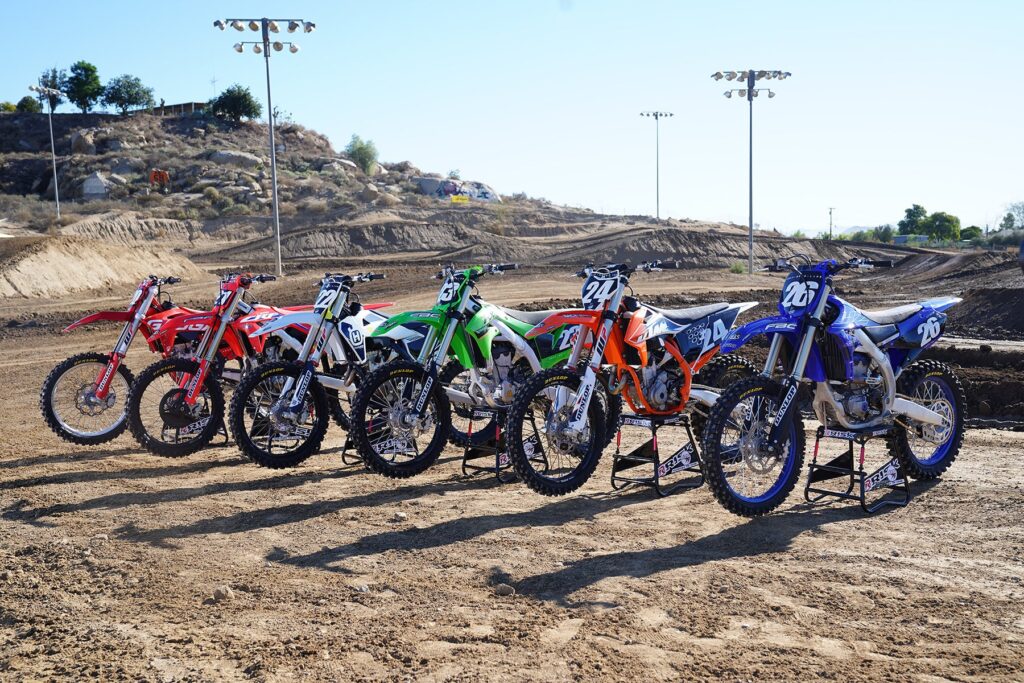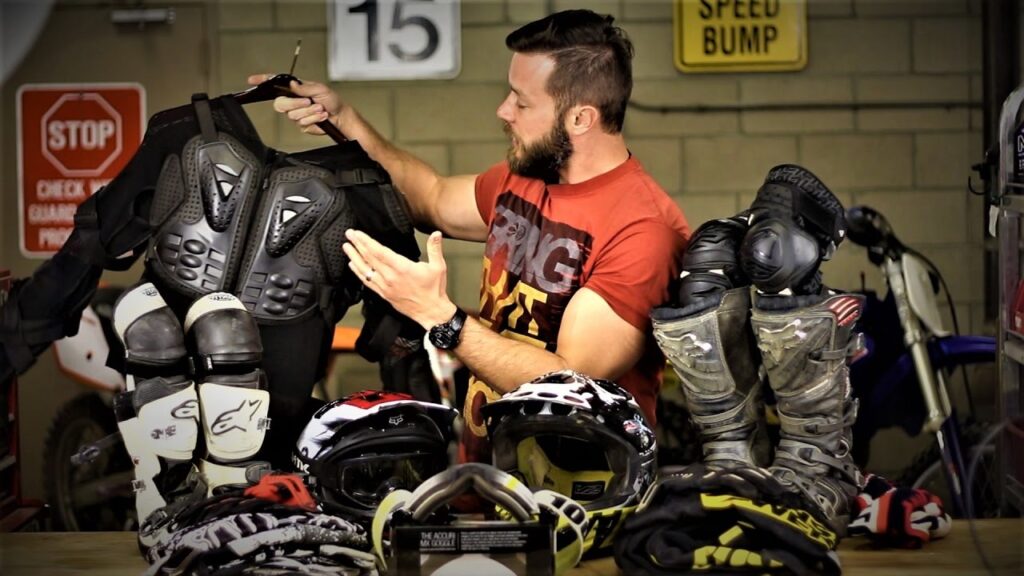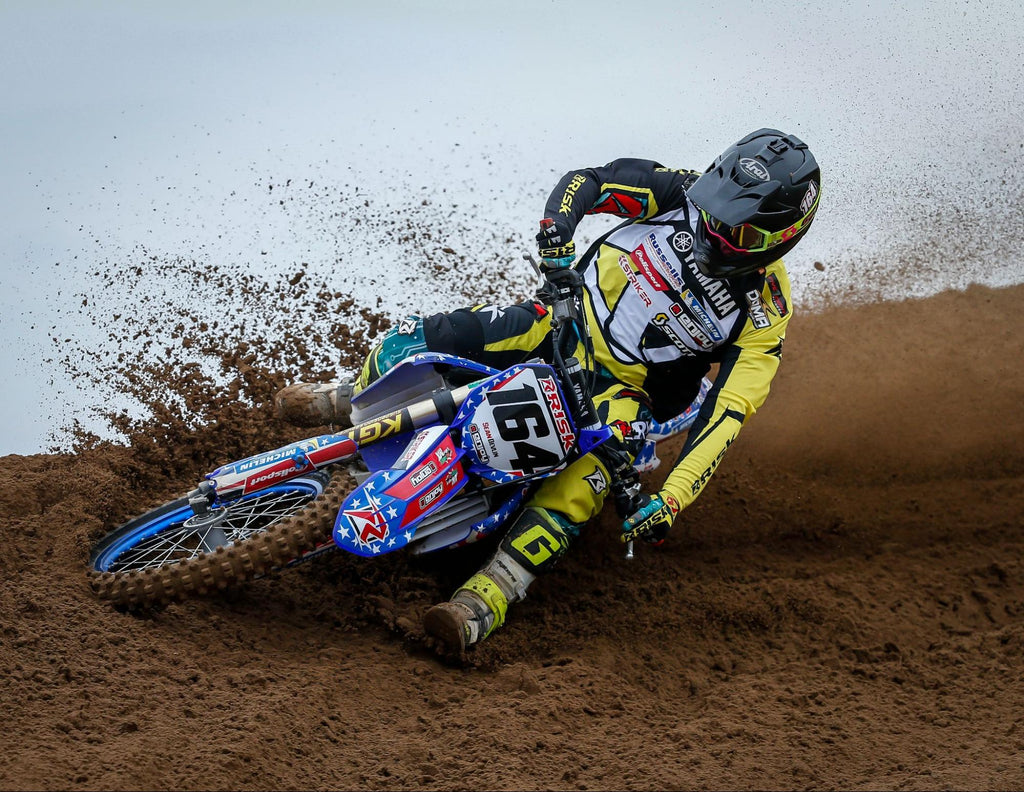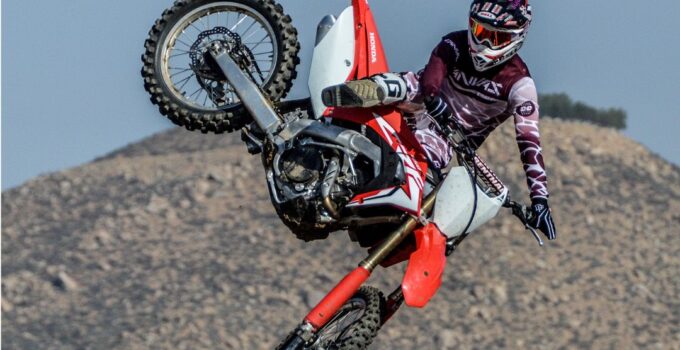Motocross has captivated adrenaline lovers for decades, but some still wonder if it qualifies as a sport. To clarify, motocross is more than just a thrilling ride across rugged terrains. It requires skill, physical endurance, and technical expertise. Competitive riders push their bodies and bikes to the limit, making it a recognized sport worldwide.
Let’s explore the key aspects of motocross: the bikes, the essential equipment, and tires, which all play a critical role in the sport’s success.
Key Points:
- Motocross is a high-skill sport demanding physical endurance.
- The right bike design is crucial for performance.
- Protective equipment ensures rider safety.
- Tires tailored for rough terrain are essential.
The Bikes of Motocross: Built for Speed and Agility

Source: riskracing.com
Motocross bikes differ from other motorcycles in several ways. Built to handle jumps, uneven surfaces, and sharp turns, these bikes are designed for the rough demands of off-road racing. Lightweight frames ensure riders can maneuver through obstacles without losing control.
A high-quality suspension system absorbs the shock from jumps and rugged terrain. This allows riders to maintain control over their bikes even when landing after significant air time. Unlike road motorcycles, motocross bikes feature longer travel suspension systems, which provide better cushioning for the rider.
Another key element in motocross bikes is their engines. Two-stroke engines are more common in motocross because they offer faster acceleration, which is vital for quick bursts of speed during a race. However, some prefer four-stroke engines for their consistency and smoother power delivery. Selecting the right bike engine depends on the rider’s preference and the type of race.
Tires: The Key to Winning Races
Choosing the right tires can make the difference between winning and losing a motocross race. Each tire is designed to handle specific types of terrain, and the wrong choice can severely impact a rider’s performance. Riders face various surfaces during a motocross race, including dirt, mud, and rocks. Tires with deep treads and strong sidewalls provide better grip on these difficult surfaces.
There are two main types of tires for motocross: soft terrain and hard terrain tires. Soft terrain tires are designed for loose dirt and sand. They feature deeper lugs that dig into the surface, helping riders maintain control. On the other hand, hard terrain tires have shallower treads and are built for compact dirt or rocky paths. They offer better traction on solid surfaces.
Tire pressure also affects performance. Lower pressure can provide more grip, but it increases the risk of a tire puncture. Higher pressure, while reducing the chance of punctures, may reduce traction. Finding the right balance is crucial for achieving optimal performance on the track.
Motocross riders need tires that can handle dirt, mud, and uneven surfaces. For example, riders in Ontario might benefit from visiting Rectangle Auto Supply, a family-owned business that has been serving the automotive needs of Southern Ontario for over 50 years. Their St. Catharines tires offer specialized options for riders looking to conquer tough tracks.
Equipment: More than Just the Bike

Source: m.youtube.com
Safety gear plays an equally important role in the sport. The right equipment protects riders from potential injuries, which can happen often during races.
The helmet stands out as the most critical piece of equipment. In motocross, crashes can result in severe head injuries, making a well-fitting, high-quality helmet essential. Helmets designed for motocross offer better impact resistance, ensuring the rider’s head remains safe during any mishap.
Next is the protective clothing. Full-body suits with padding help shield the body from injuries caused by falls and flying debris. Chest protectors, knee guards, and elbow pads are also necessary for maximum safety. Each piece of gear adds to the rider’s protection without sacrificing mobility or flexibility.
Boots designed for motocross protect the legs and feet from impact and provide extra support. The footwear must be sturdy yet flexible enough to allow for quick movements while riding.
Gloves are another crucial item. Riders need gloves that offer a good grip while allowing them to maneuver the bike effectively. Slipping hands can cause a loss of control, especially when navigating tricky sections of a course.
Maintenance: Keeping Bikes in Peak Condition
Riders must maintain their bikes regularly to keep them in good condition. Routine checks of the engine, suspension, and tires are necessary. Engines need regular oil changes, and the air filter must be kept clean to prevent dirt from clogging the system. Neglecting these essential tasks can lead to mechanical issues during a race.
Suspension maintenance is also crucial. A properly tuned suspension system ensures that the bike performs well, absorbing shocks from jumps and rough terrain. Riders should regularly check their suspension settings and make adjustments as needed.
Another critical area to focus on is tire care. Riders should inspect their tires for wear and tear before every race. Damaged tires can lead to poor traction, which is dangerous in motocross.
Brakes, too, must be checked often. Worn brake pads can make it difficult to slow down, leading to potential accidents. Riders should replace brake pads regularly to ensure they have full control of their bikes during a race.
The Physical Demands of Motocross

Source: riskracing.com
Motocross is not only about the machines but also the physical endurance required by riders. Riding a bike on rugged terrain demands strength, balance, and agility. The constant shifting of body weight helps maintain control over the bike, especially on uneven tracks.
Motocross riders need strong core muscles. Core strength helps them maintain balance and stability on the bike. It also allows riders to control their bodies while performing jumps or navigating difficult sections of the track.
Cardiovascular endurance plays a significant role in motocross. Races can be long, and riders must maintain focus and energy throughout. Regular physical training, including running and strength exercises, helps riders build the stamina necessary to compete at a high level.
Reaction time is another essential skill. Riders must react quickly to changes in the terrain or other competitors. Split-second decisions often determine the outcome of a race.
Conclusion
Motocross is undeniably a sport, combining technical skill, physical endurance, and a mastery of specialized equipment. From the bikes designed for agility to the protective gear that ensures rider safety, each aspect of motocross contributes to its status as a recognized sport. The physical demands placed on riders, along with the precision required to control the bike, further cement its place as a sport.
Tires, equipment, and regular maintenance play an equally critical role in motocross. Riders must select the right gear and take care of their bikes if they want to perform well in the sport. The high level of competition and the challenges presented by each course prove that motocross is not just a hobby; it is a legitimate sport that requires dedication and expertise. For riders looking to optimize their performance, proper equipment choices and bike maintenance can make all the difference.

